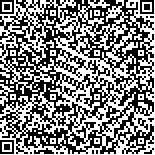| This article has been:Browse 2720Times Download 2414Times |

scan it! |
|
|
| DOI:10.13522/j.cnki.ggps.2019051 |
|
| Calibrating and optimizing the parameters in angstrom equation for calculating evapotranspiration from mainland China |
|
XIA Xingsheng,ZHU Xiufang,PAN Yaozhong,ZHANG Jinshui
|
|
1.State Key Laboratory of Remote Sensing Science, Jointly Sponsored by Beijing Normal University andInstitute of Remote Sensing and Digital Earth of Chinese Academy of Sciences, Beijing 100875, China;2. State Key Laboratory of Earth Surface Processes and Resource Ecology, Beijing Normal University, Beijing 100875, China;3. Institute of Remote Sensing Science and Engineering, Faculty of Geographical Science, Beijing Normal University,Beijing 100875, China;4. School of Geographical Sciences, Qinghai Normal University, Xining 810016 , China
|
| Abstract: |
| 【Objective】Evapotranspiration is an important process of hydrological cycle and the Food and Agriculture Organization (FAO) of United Nations has recommended the Angstrom Equation to calculate the total solar radiation (Rs) parameters required to calculate the reference crop evapotranspiration, in which the parameters as and bs are crucial for accurate estimation of Rs. We calibrated and optimized the two parameters in this paper for mainland China.【Method】The analysis was based on solar radiation data and percentage of sunshine data measured from 1957 to 2010 from 121 weather stations across the country. We calculated the values of as and bs for 38 agricultural production regions using least-square regression, based on daily mean solar radiation and percentage of sunshine. We then used the Rs measured from 2011 to 2016 as “true” date and compared it with those calculated using the estimated as and bs and recommended by FAO, respectively, from which we further calculated the optimal as and bs in each month for the 38 agricultural regions .【Result】The correlation coefficient between n/N and Rs/Ra was > 80% for most stations. The coefficient as obtained from the linear regression model was in the range of 0.1~0.2 for most regions, and it was spatially insensitive. In contrast, the coefficient bs oscillated temporally and changed spatially in the range of 0.4~0.8 in most regions. In general, the Rs calculated using the parameters estimated from the regression model was superior to that calculated using the FAO recommended value, although exception existed.【Conclusion】 The correlation between n/N and Rs/Ra can be used to estimate the parameters as and bs in the Angstrom formula directly from the regression model, and as and bs estimated from the regression model for each of the 38 agricultural areas differed considerably from that suggested by FAO. However, there are circumstances that the FAO value worked better. Therefore, with the available data and method, combining the regression model and the recommended as and bs by FAO appears to be the best solution to estimate the reference crop evapotranspiration. This paper has implication as it provides further case study on calibrating the parameters in the Angstrom Equation and can thus help improve the accuracy of Rs estimation in China. |
| Key words: Solar radiation; angstrom equation; calibration; reference crop evapotranspiration |
|
|